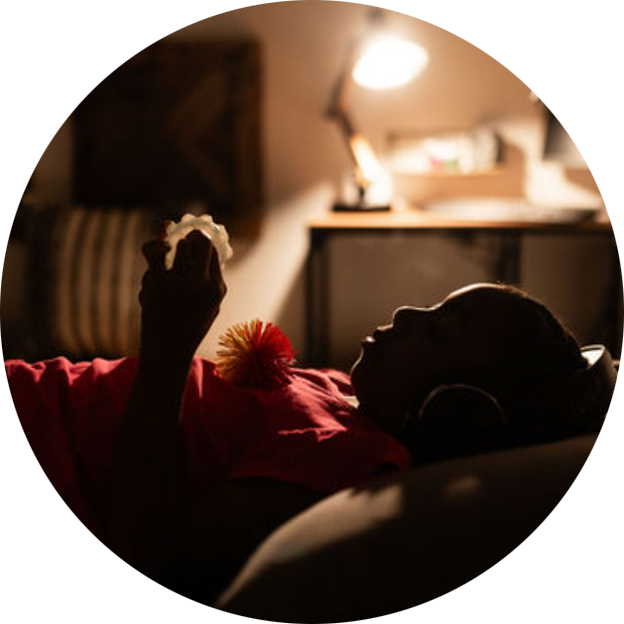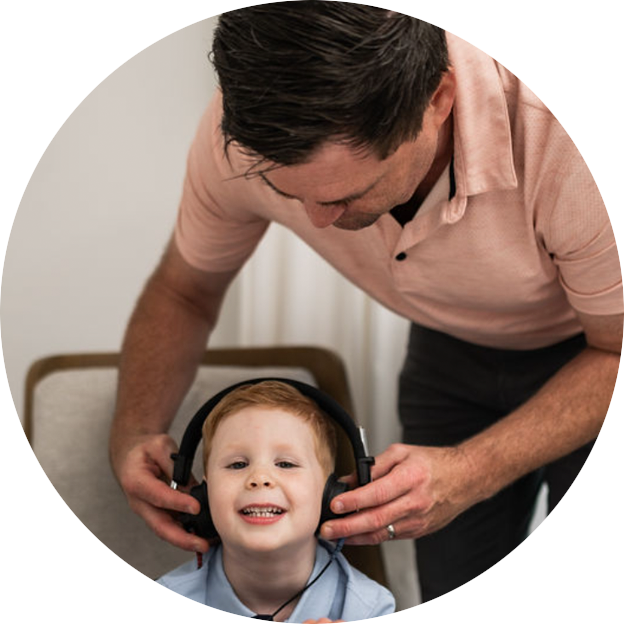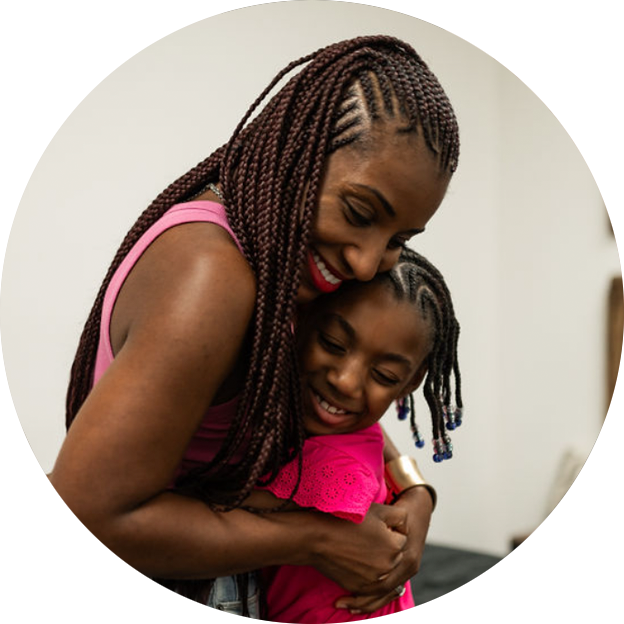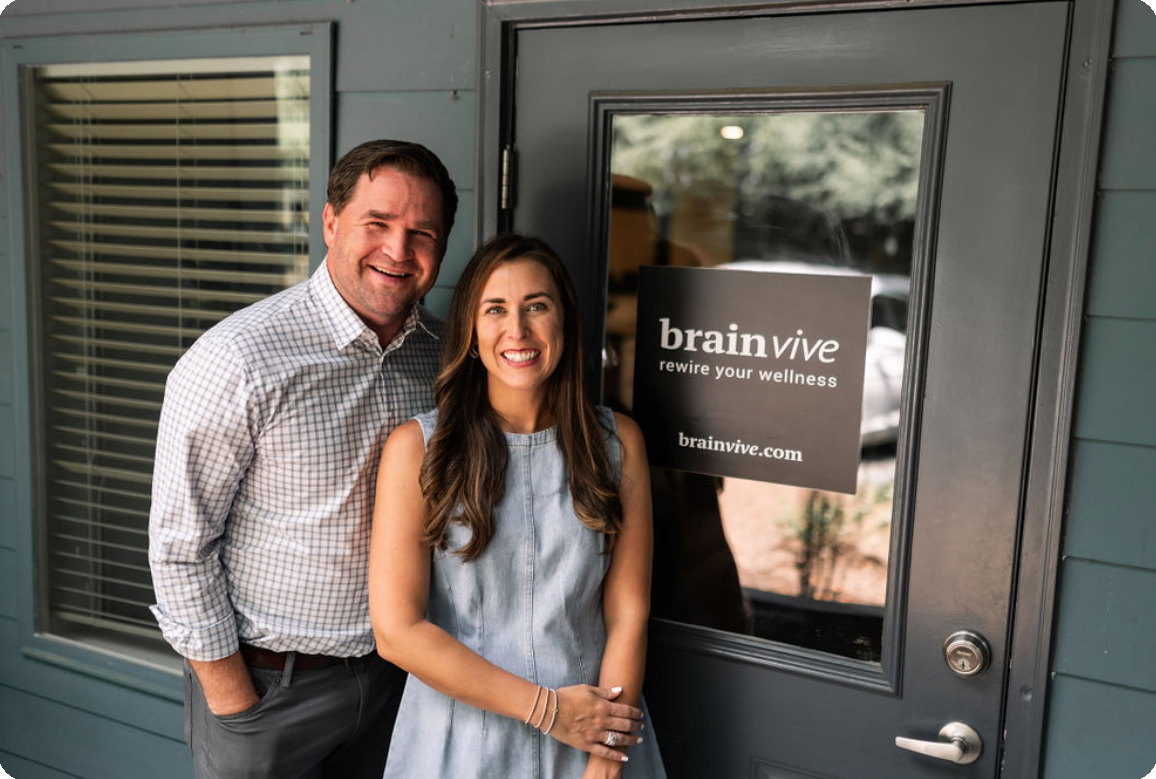Understanding the Challenge:
The Sympathetic State in
PANS/PANDAS
PANS (Pediatric Acute-onset Neuropsychiatric Syndrome) and PANDAS (Pediatric Autoimmune Neuropsychiatric Disorders Associated with Streptococcal Infections) can be overwhelming for both children and their families. One of the most challenging aspects of these conditions is that they often leave children and young adults stuck in a sympathetic state—a condition where the nervous system is in constant distress, and the body is perpetually locked in fight, flight, or freeze mode.
What does this mean?
Imagine your child's nervous system as a car engine that is always revving in overdrive. This state of constant alertness and readiness to "fight" for "flee" is exhausting and makes it incredible difficult for the brain and body to heal.
The Symptoms of Fight or Flight in Children with PANS/PANDAS
When children are stuck in this sympathetic state, they may exhibit a variety of symptoms that go beyond typical stress responses. These might include:
➞ Hypervigilance: constantly scanning their environment for perceived threats, or anticipating a threat, which leads to an inability to relax or focus on everyday activities.
➞ Irritability and Aggression: quick to anger or react aggressively, even to minor frustrations or changes in routine. These reactions may lead to meltdowns and irrational patterns of thought.
➞ Anxiety and Panic Attacks: overwhelmed by fear and worry, sometimes without a clear cause, leading to frequent episodes of panic, worry, fear, and rituals.
➞ Sleep Disturbances: difficulty falling or staying asleep or night terrors due to their heightened state of alertness, contributing to further fatigue and emotional instability.
➞ Physical Symptoms: headaches, stomachaches, and muscle tension that seem to have no physical cause but are a direct result of the body's stress response.
Why Healing is So Hard When the Nervous System is in
Distress
When the nervous system is locked in this heightened state, the body's natural healing processes are severely compromised. The immune system is less effective, digestion is impaired, and the body prioiritizes survival over growth and repair. This makes it nearly impossible for children with PANS/PANDAS to fully recover, as their bodies are constantly battling an internal storm.
Additionaly, chronic activation of the fight-or-flight response can affect the sensory systems, particularly the vestibular, visual and auditory systems. This response exacerbates anxiety, mood dysregulation, and irrational responses, and it becomes a vicious cycle. Once these systems are addressed, the nervous system becomes more resilient and the body in turn has a much better chance to heal.
>>Studies have shown that the body may adapt to perceived threats by narrowing the visual field—commonly referred to as tunnel vision—to focus on potential dangers. Research indicates that high levels of stress can lead to a significant reduction in peripheral vision, impairing an individual's ability to process visual information accurately (Wells et al., 2016).
>>Stress also disrupts the vestibular system, which is responsible for balance and spatial orientation. When the vestibular system is out of sync, it can cause disorientation, dizziness, and difficulty with motor coordination, all of which contribute to heightened anxiety and sensory overload. This imbalance can make it harder for a child to feel grounded or calm in their environment, exacerbating the effects of the fight-or-flight state.
>>Similarly, stress can negatively impact the auditory system, particularly right ear dominance. The right ear is typically more efficient in processing speech due to its connection to the language-dominant left hemisphere of the brain. However, prolonged activation of the fight-or-flight response can shift the brain's focus toward environmental threats, reducing auditory efficiency. This shift disrupts the child's ability to process speech effectively,
These sensory imbalances across the vestibular, visual, and auditory systems add an extra layer of complexity to recovery.
How BrainVive Can Help:
Bringing the Nervous System into Balance
At BrainVive, we understand that to truly support recovery from PANS/PANDAS, it’s crucial to address the underlying nervous system imbalance. Our NeuroRehab Protocol is designed to bring the nervous system out of the sympathetic state and into a more balanced, parasympathetic state, where healing can truly begin. Through light, sound, motion and limbic system training, we are able to help promote healing for your child.
"The PANS diagnosis for my son completely flipped our life upside down. Overnight he became a different kid with crippling anxiety, OCD, irrational fears, sleepless nights, etc. We were desperate for any relief. I read that there was high success with sleep and anxiety with the BrainVive program so decided that we would give it a try because if we could get any improvement in those areas, life could be more manageable. We didn't even finish the in office visits before he started experiencing noticeable improvements. I would say within 3 months of starting the program he was completely symptom free. PANS is a distant memory now. We 100% credit BrainVive for this and love sharing our testimony in hopes another family with PANS/PANDAS can find relief too. My son was sharing his experience with a family friend and he said "it saved my life." I have my son back and I could not be more grateful for this program."
- Jenna S.
“My daughter was diagnosed with a mild case of PANDAS, which a few years later escalated to a severe case of PANS despite treatment. We ended up seeing 20+ practitioners all over the country, and while we occasionally saw some improvements, she was eventually no longer able to function due to debilitating anxiety and OCD. I became aware of the importance of the vagus nerve, and I believed her fight-or-flight response was hindering her ability to heal. After much research, we chose BrainVive for nervous system support, and the results were nothing short of unbelievable, even to our lead PANDAS/PANS specialist! We noticed a change of mood and ability to go outside the home in a matter of days, and by the end of the program, she was able to engage in the community in a way we hadn’t seen for more than a year - communicating, smiling, motivated, and less anxious about everything. She continued to improve throughout the next 6 or so months and even her labs improved. She still has some residual OCD/anxiety, but her program was two years ago and she has never regressed, only improved despite exposure to infections and typical stress at college. I can safely say BrainVive changed her brain, her body, and her life, and we believe this program is a crucial component of healing for every child with PANS/PANDAS.”
- Beth
Focusing on
The Limbic System
The limbic system, which governs emotions and the stress response, is another critical area of focus. By targeting this system, we can help reduce the overactive stress responses that keep your child in a state of perpetual distress. This not only helps calm the fight-or-flight response but also promotes emotional regulation and resilience.
A Path to Healing
We believe that every child deserves the chance to heal, and at BrainVive, we’re committed to helping your child achieve that. Our NeuroRehab Protocol offers a comprehensive, science-backed approach to restoring nervous system balance, empowering your child to move beyond the challenges of PANS/PANDAS and towards a healthier, more balanced life.
Let us help your child find peace and healing by addressing the root causes of their distress. Together, we can create a brighter future of healing.





